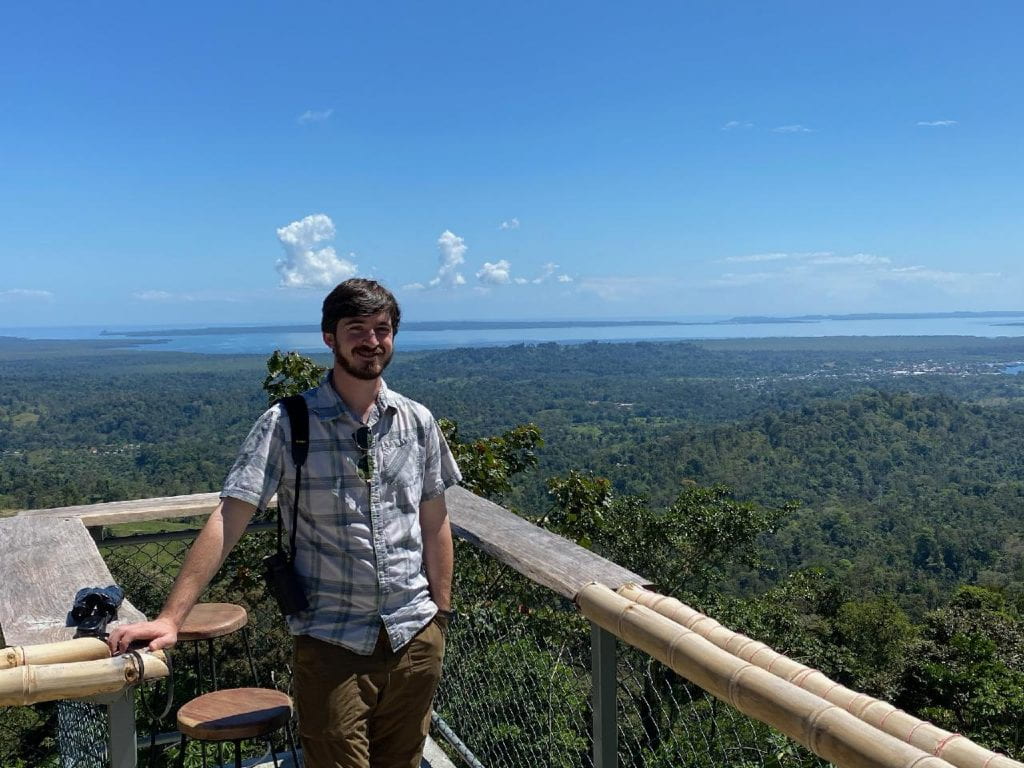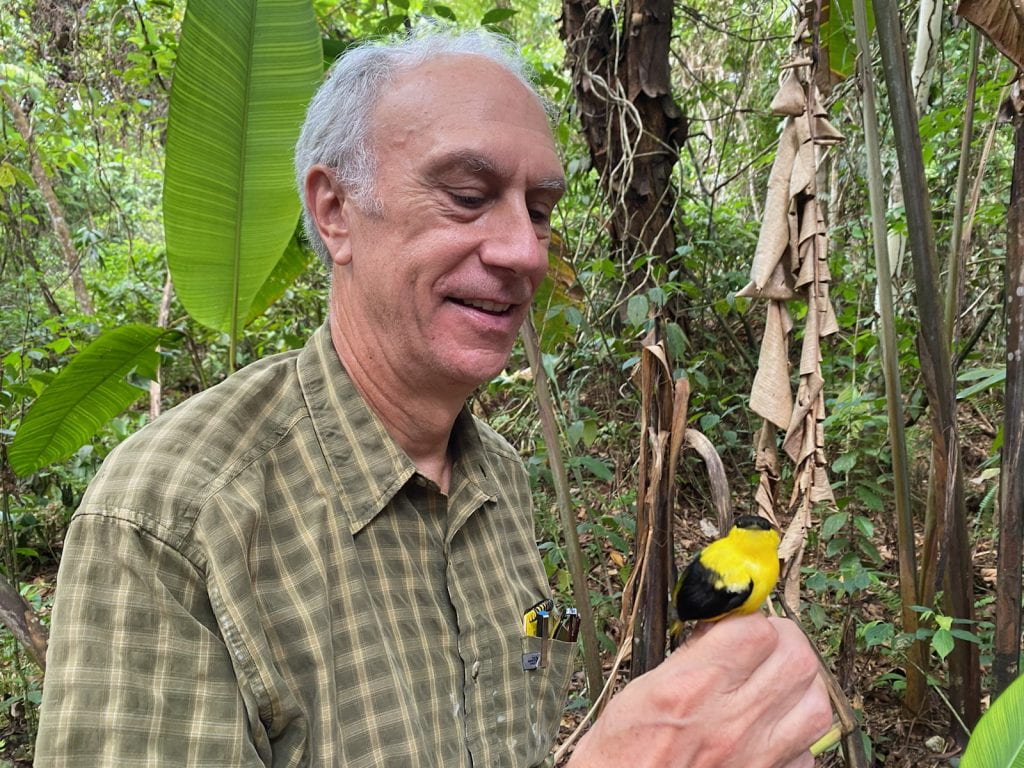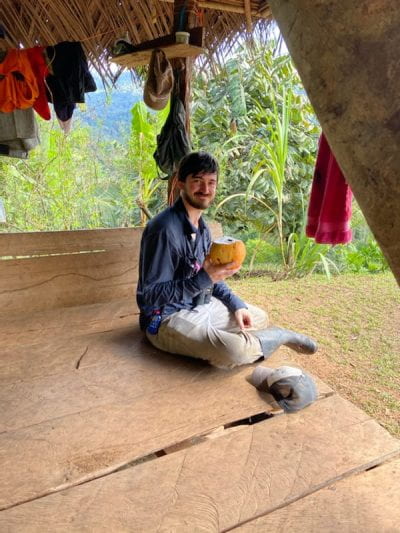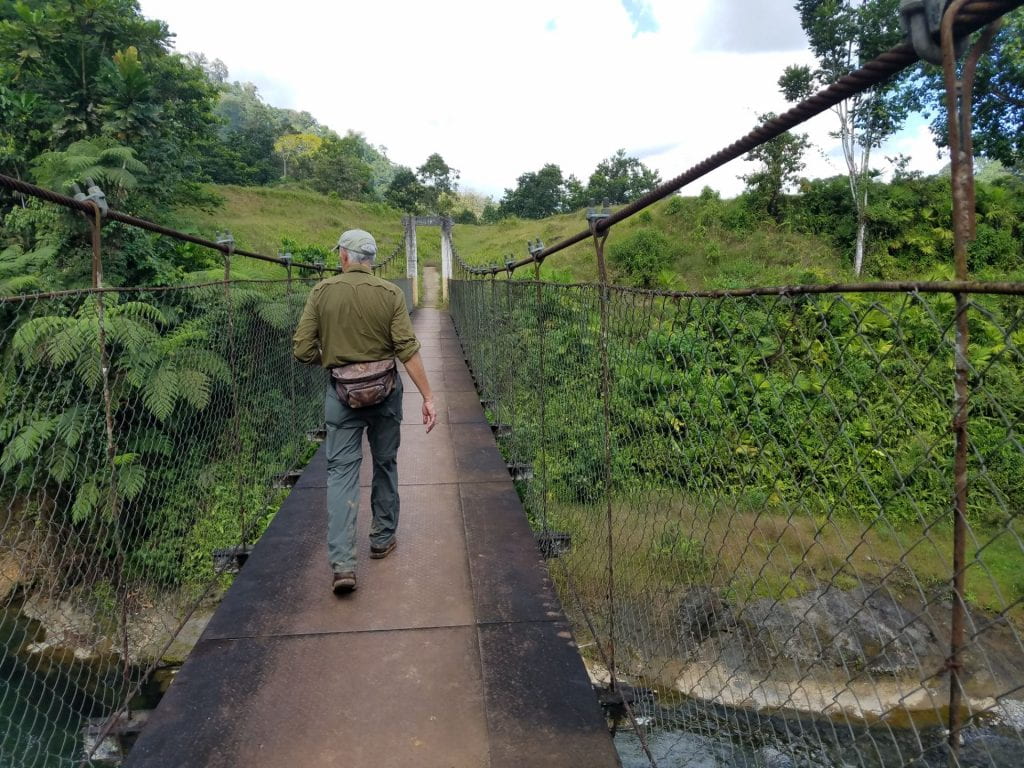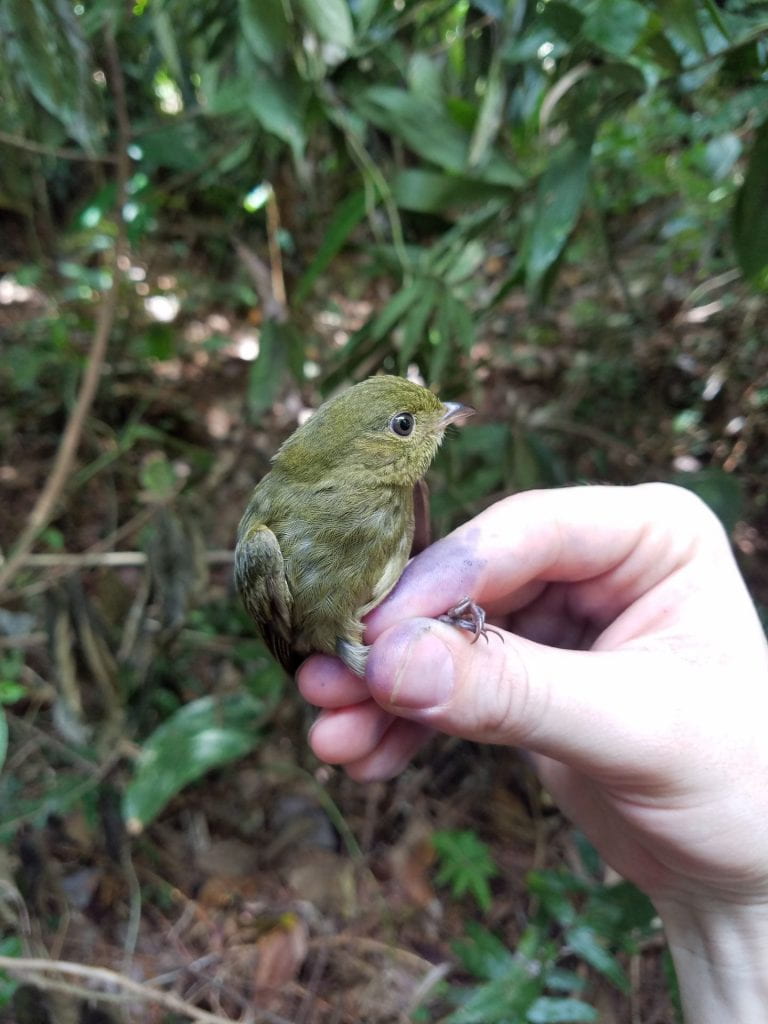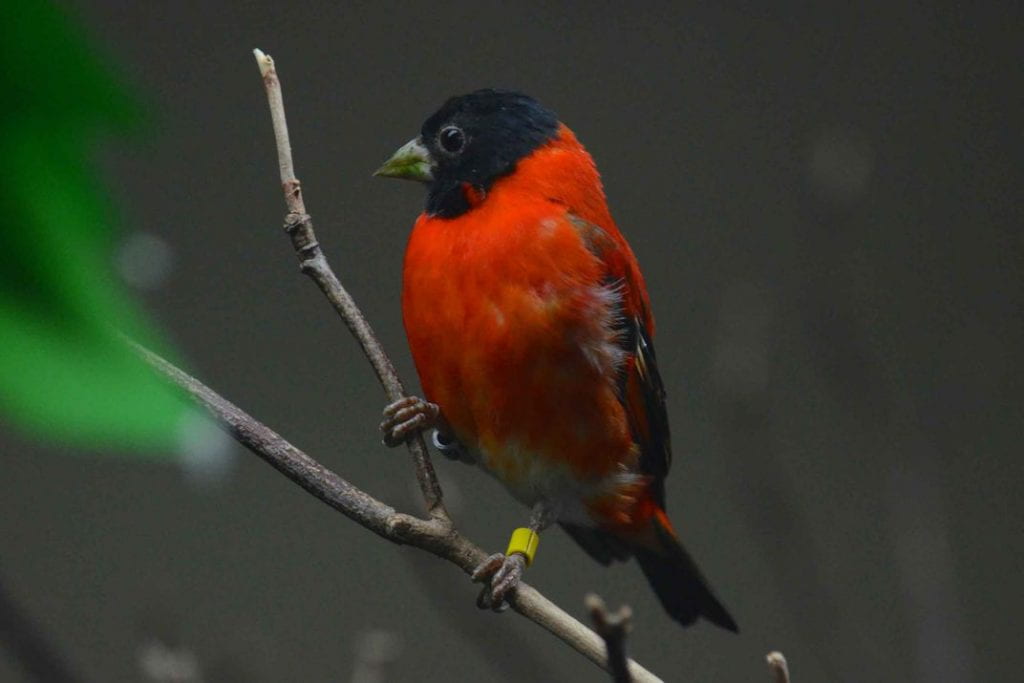In February, PhD student Kevin Bennett headed down to Panama with Dr. Braun to get set up for a 3+ month field season studying how light and color impact sexual selection in manakins. Because of the COVID pandemic, however, they returned to D.C. last month with data from an abbreviated season. Science happens in the real world, and sometimes that means putting it on hold for the sake of safety. Kevin will be back again next spring, undeterred.
Before he left Panama, Kevin’s motion-sensor camera traps recorded manakin behavior and incidentally captured other species as well. Below are some videos and photos from the season.
A manakin display, male and female. Males make the snapping sound by smashing their wings together.
A male clearing his display court.
Camera “bycatch.” Olive-backed Quail-doves.
Jaguarundi, a native cat species.
Tamandua, a species of anteater.
Northern naked-tailed armadillo. This species is listed as Data Deficient by the IUCN.

